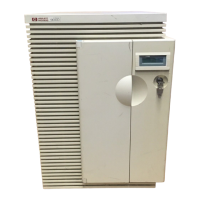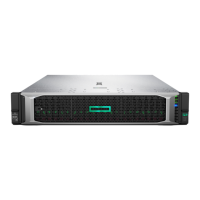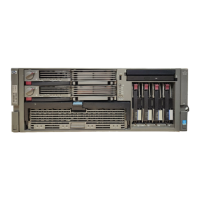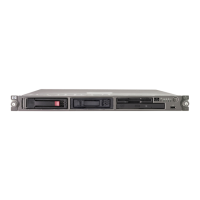3-6 Troubleshooting
Table 3-2 shows the DC voltage requirements for the individual components of the computer.
* = +5V is provided by the Power Monitor via the ribbon cable.
** = K100 only.
Power Monitor Card
The Power Monitor card is responsible for monitoring ambient (room) temperature, internal temperature,
all DC voltages, system fan speed, and the key switch. The Power Monitor is responsible for controlling
fan speed, DC outputs (except +15V), the Display Panel, and system resets. The Power Monitor card sends
messages to the Display Panel ONLY when DC outputs are disabled.
Tables 3-3 and 3-4 detail all the messages that can be sent to the Display Panel by the Power Monitor card.
Table 3-3 is for Non-error messages, and table 3-4 is for Error messages. Use these tables to determine the
cause of the message and the action suggested to resolve the problem. Some messages may require further
explanation. These messages will have notation numbers that correspond to further details following the
table.
1. This message should be present for only a few seconds. If this message stays on the Display Panel,
either PDC did not launch self test, or the communication path between the System Board (PDH) and
the Display Panel is defective.
Table 3-2. DC Voltage Requirements
Computer component
DC
Voltage
Power
Monitor
Display
Panel
CPU System
Board
Memory HP3000
Core I/O
HP9000
Core I/O
HSC Exp.
I/O
HPPB Peripheral
Bay
Fans
+15V
(HKP)
X*
+12V X X X X X X X
-12V X X X X X
+3.3V X X X X X
+4.4V X **
+5V X X X X X X X X
Table 3-3. Non-error Messages
Display Panel Message Cause Action
SWITCH OFF
Key switch is in the STANDBY position None
SWITCH ON
Key switch is in ON or SERVICE position None
PROCEEDING TO
TURN DC ON
1 Power Monitor is about to enable DC outputs. None

